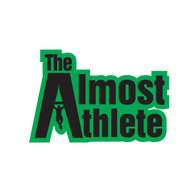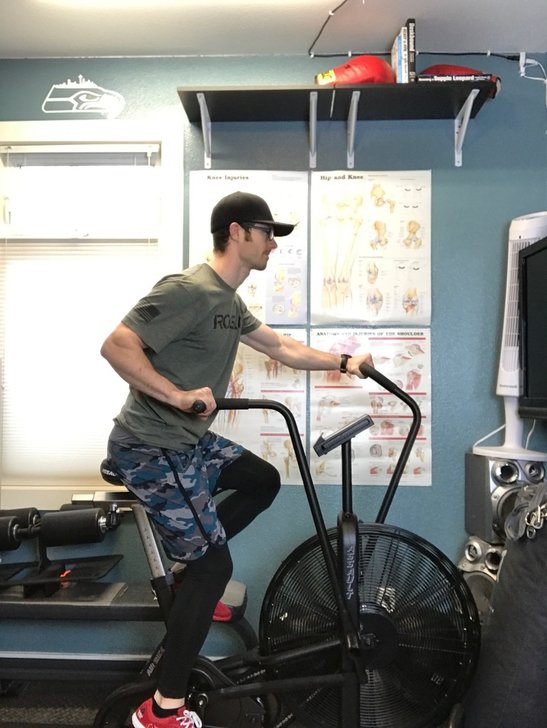|
The first question you need to ask yourself is, why are you exercising? Why are you going to the gym or the garage, or the living room. Why are you going through the effort and forcing your body through uncomfortable workouts? I believe that most people would answer this question with something that has to do with the desire for change and improvement. Whether that is losing weight, gaining muscle, strength, endurance, flexibility, sport or any other reason, the desire to improve is universal. To challenge your body with something that is more than what it is used to, in order for a change to be made. Those changes are often times limited only by the amount of effort and consistency we are willing to put towards our goal. Now that we can see the clear purpose of exercising is to make positive changes to your body through consistent action. We can also recognize the importance of doing the correct exercises or stretches or positions in order to reach our desired outcome. If you want to build an increase in muscle and strength, you are going to have to challenge your muscles in a way that is specific for increasing strength as apposed to endurance or flexibility. That is the concept of Specificity of Training, and the idea that our bodies can adapt through training, but tends to adapt to what we practice and not what we don't. Therefore, practicing good posture and body positions during training is important, as well as practicing good posture and positions throughout your day outside of training. This will help to minimize the chance of adapting to poor positions and posture and will help to reduce or avoid injuries. When it comes to exercises, training ,weight lifting, sports, etc, I BELIEVE THE NUMBER ONE THING WE CAN DO TO MINIMIZE AND AVOID INJURIES IS TO WARM-UP PROPERLY. It seems that for most people that exercises at a gym or at home tend to either do a poor job of attempting to warm up before exercising or just skip the warm up altogether and jump right into their workout. This is thought to be a really great way to cut a few minutes off of their workout. Unfortunately this is setting them up for a poor workout and a potential injury. I believe there are 5 principles of a good warm-up routine to avoid injury and optimize your workout. 1) Start with increasing systemic blood flow which will help to increase body and tissue temperature as well as preparing your breathing for your exercise. This increase in body and tissue temperature is important for shifting blood flow away from your organs and into the working muscle tissue. This not only helps prepare for activity but allows improved tissue extensibility as well as improved oxygen supply to the muscles. This can be done with a number of different exercises including but not limited to jogging in place or around the block, jump rope, bicycle or rowing, to name a few options. 2) Increase blood flow and neuromuscular awareness to specific muscles that control your major joints including hips, shoulders, and spine. This is important for getting your body out of the patterns of daily movements and positions that are adapted during work, driving, sitting, and repetitive tasks. You want to break out of these potentially poor patterns before trying to add additional stressors or learning new movement patterns or skills. This can be done with focused controlled motions with bodyweight squats, lunges, push ups, rows, and side stepping to name a few. 3) Take your joints though their full Range of Motion (ROM). This includes shoulders, elbows, wrists, hips, knees ankles and spine. This is very important to ensure that you start each workout with access to your full ROM at each joint before adding additional stressors or movement patterns. This can be done with movements like, full depth bodyweight squats for hip, knee and ankle ROM as well as shoulder pass throughs and around the worlds with a dowel as well as leg swings to name a few. 4) Prepare movement patterns that are specific to today's workout. This is primarily focusing on the neuromuscular connection and awareness. This is how you can continue to refine a skilled movement pattern as well as prepare your body to go through specific motions and movements that you plan to challenge your body with during todays workout. This should be done with no weight to light weight depending on the movement. 5) Things to avoid during your warm-up including but not limited to, static stretches, ballistic stretches, quick agility work, aggressive plyometrics and extended cardio. Static stretches inhibit the stretch response and therefore can limit muscle reaction time and performance and are best used for muscle lengthening post exercises. Ballistic stretches, quick agility work, and aggressive plyometrics all rely on muscles being stretches far and quickly followed by a quick and strong muscle contraction. This puts excessively increased forces on your joints and even more importantly on your connective tissue. These are great exercises when done properly and once you are already warmed-up. Extended cardio training can be a great way to train for cardiovascular endurance but is not a substitute for a proper warm-up. If you choose to have extended cardio as part of your exercise routine, this shoulder ideally be done after completing your warm-up to ensure proper mechanics and to avoid injury. If fatigue is reached with extended cardio, this could be another reason to avoid this as part of your warm-up. To wrap things up, it is a good reminder to focus on your purpose for exercising in the first place. Challenge your body in specific ways in order to achieve desired changes without injury. The 5 principles of a good warm-up can help to prepare your body for a great workout while avoiding injuries. * Disclaimer: Remember to always consult with your physician or physical therapist in regards to starting or changing your exercise routine and in no means is this information meant to diagnose or treat your injury. For full legal disclaimer, see About Me page.
1 Comment
An effective warm-up is nothing but a class of physical activities carried out just before an action that provides your body with a transformation from stationary to movement. In other words, it gives your body enough period of assimilation in order to shift completely without struggling too much at the beginning of an exercise session. Each and every individual's body requires a specific series of preparative gesticulation for any endeavor and activity. Thus, it's quite significant to unearth your exact necessities and follow the normal principles(mentioned in the above post), by which you can avoid injury and optimize your physical-jerk.
Reply
Leave a Reply. |
Author : Jordan ProudfootHere are my thoughts and insights into fitness and wellness to be the best you possible. Archives
February 2019
Categories
All
|


 RSS Feed
RSS Feed
